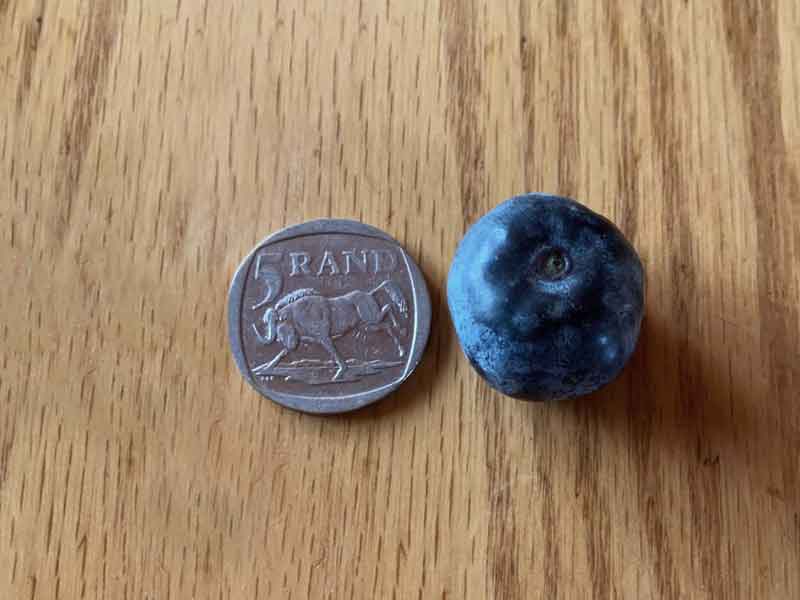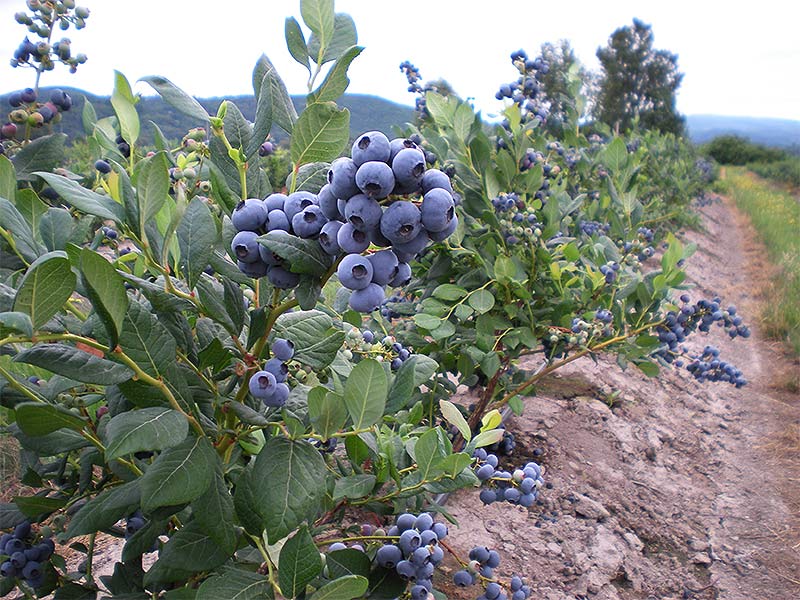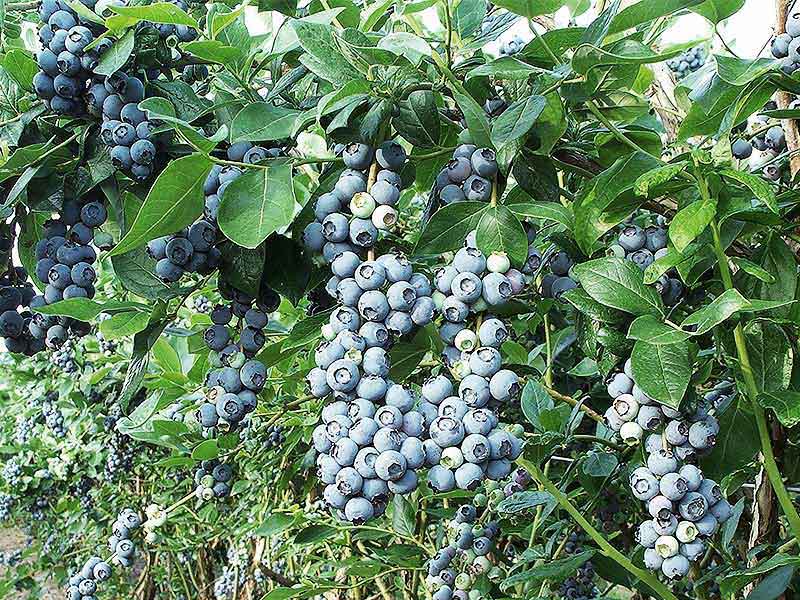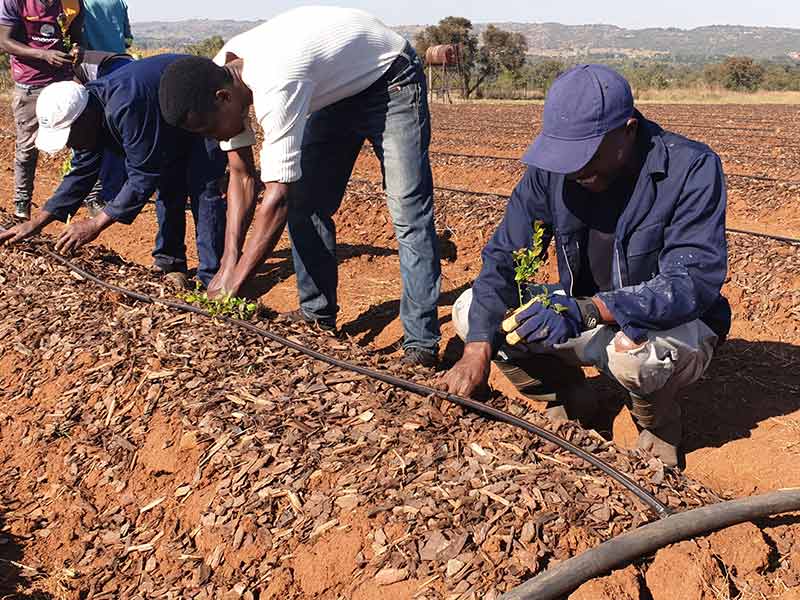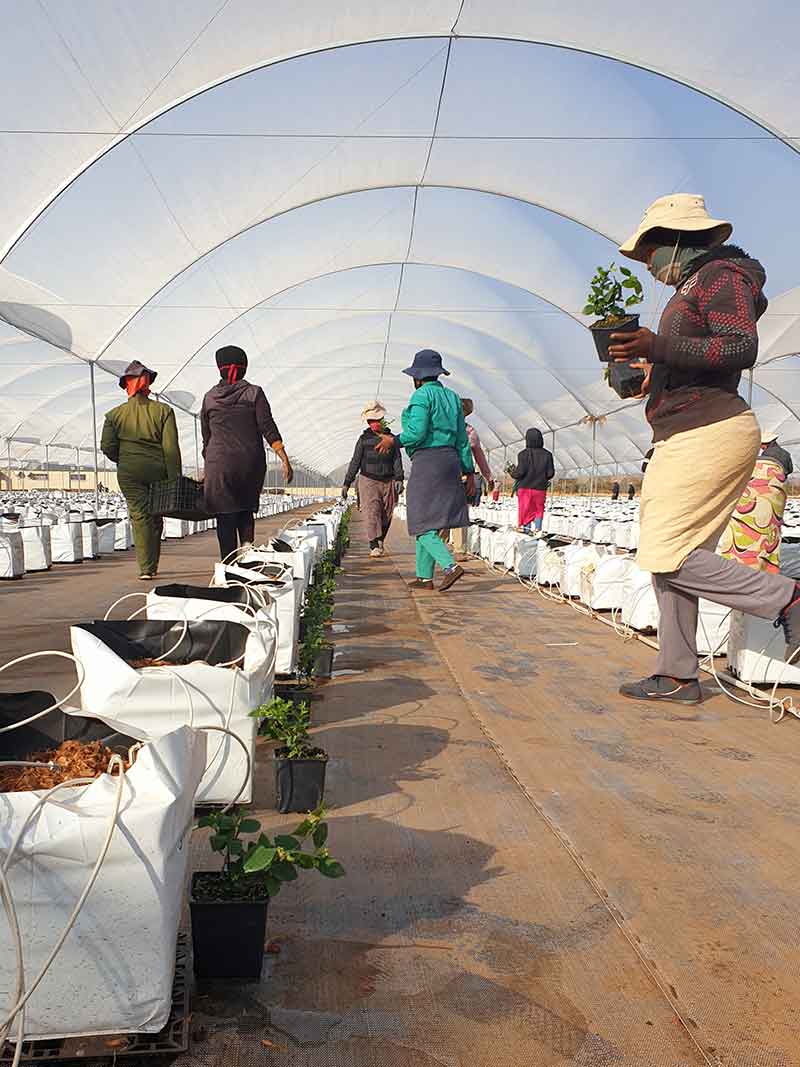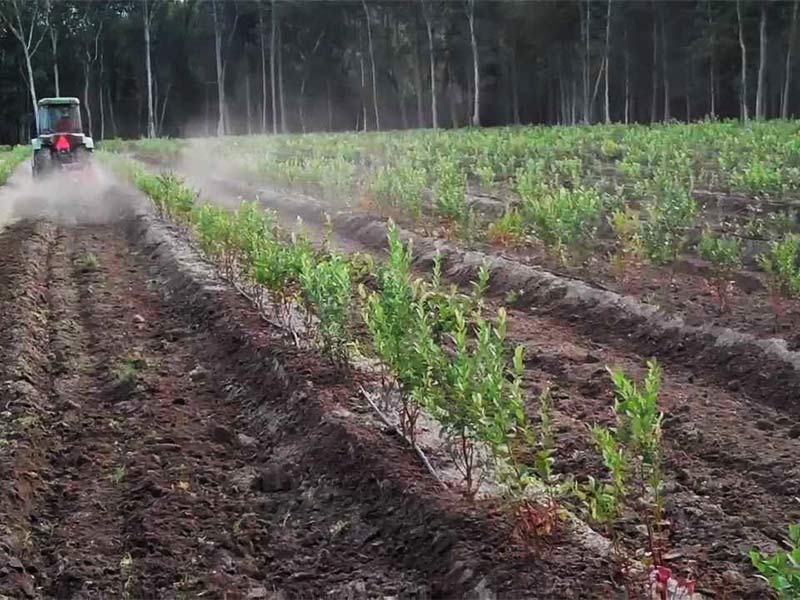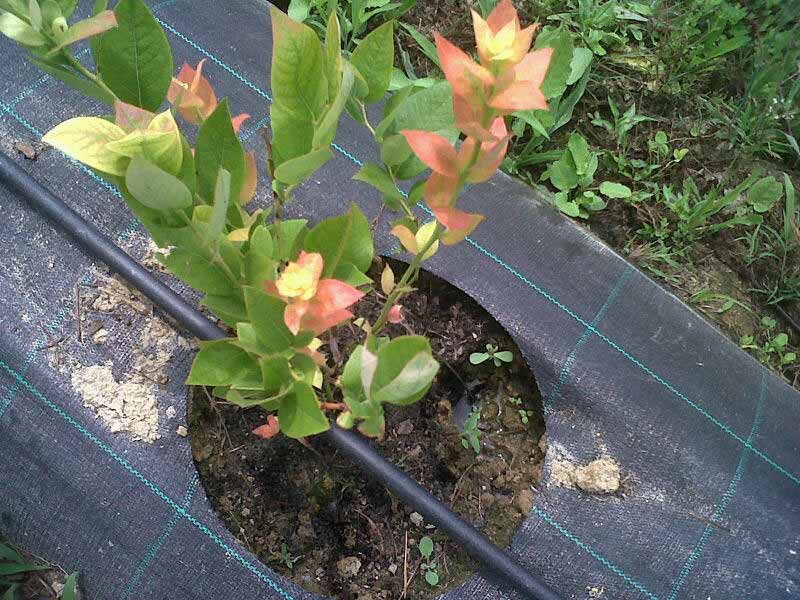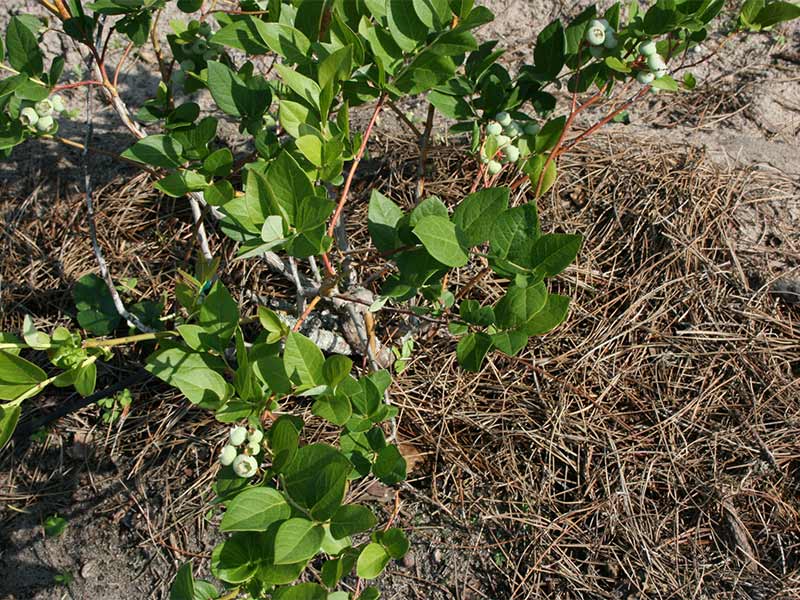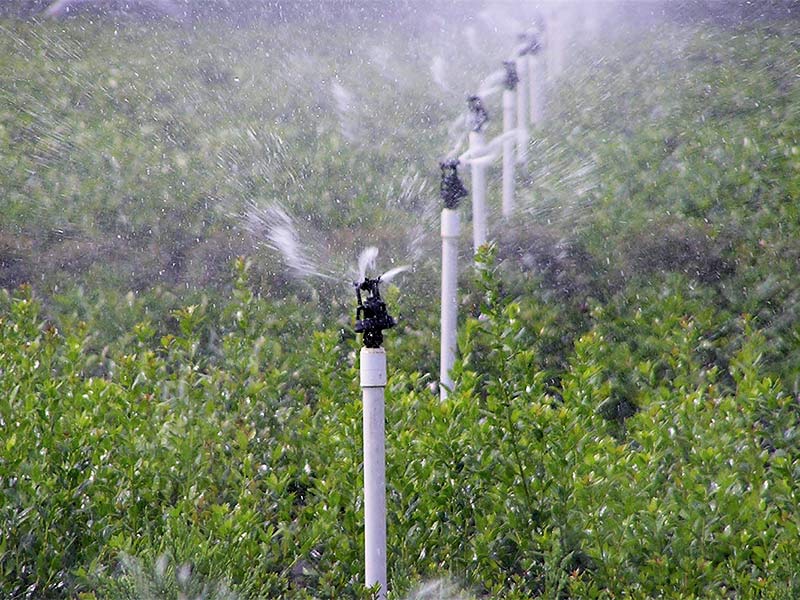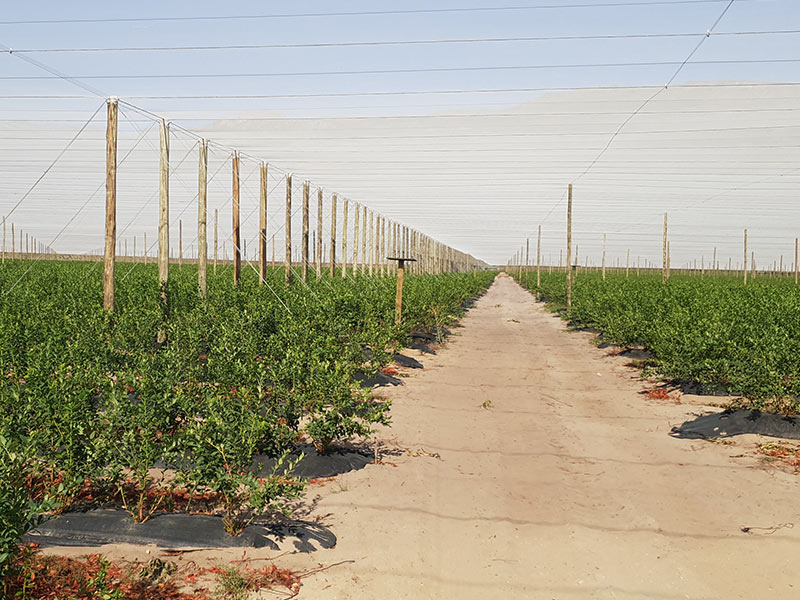Site selection and preparation:
Blueberry plants require superior soil growing media with good drainage and internal aeration as well as good water holding capacity. Ideally, the soil should be sandy loam in texture with an organic percentage of 3% or more. Preferably sites where agricultural lime was not previously worked in which would have artificially raised the ph level and might be too high to economically lower the ph level to around 4.5 (KCl ph). Elemental sulphur can be used to lower the soil ph, but it takes time for the soil bacteria to break down and adjust the ph which can take 6 -12 months depending on the climate and soil conditions. Composted and untreated pine bark can be worked into the soil to lower the ph level and to add organic matter. Sphagnum peat moss can also be incorporated as this is a great natural product that will lower the soil ph level, helps with aeration and water retention.
Blueberry bushes prefer full sun but they can tolerate partial shade.
Blueberry roots are very shallow and require aeration. The roots are fine, fibrous and do not have root hairs and therefore do not compete well against weeds which must be eliminated before planting. Weed control should begin the year before planting with means of herbicides and/or cultivation. Avoid sites that are waterlogged, have poor drainage or have a permeable layer close to the surface. Raised beds, 15cm-30cm high can be used if the soil is marginally drained or if the water table is lower than 60cm.
Blueberry plants can also be container grown in pots or bags. We recommend using at least a 23L pot/grow-bag as the plants do get fairly large. A basic potting medium is a mixture of pine bark mulch or acid compost mixed in with about 20-30% Canadian peat moss. The plant can then be directly planted into this mixture. A bit (about 15%) of sandy soil can also be used if it has been tested to ensure that the ph level is less than 6.0.
For optimum control, growth and yields, we recommend using the best suitable growing medium for the specific production system and climate. Throughout the years we have tested various different growing mediums, pots and grow bags on a few thousand of our mother plants, so please feel free to consult us on various options as we can also advise and supply these items.
If planted directly into the ground, a hole with the size of 40cm x 40cm x 40cm can be made where the mixture, mentioned above, can be placed into. When transplanting the plant, make sure to plant it at the same depth to ensure that the crown is not covered or the roots exposed. If peat moss is used in the planting medium, make sure to first wet it well, otherwise it will act as a wick and draw the moisture from the plant roots.


